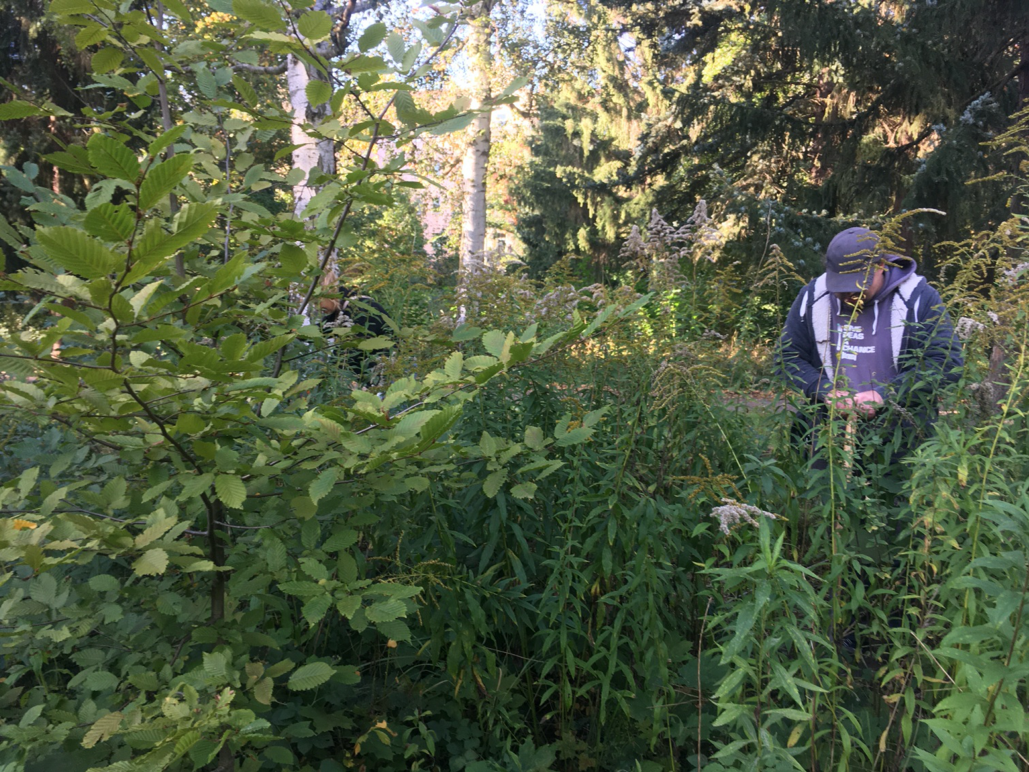Seeding Futures: Regeneration as Utopian Promise
By Dr. Arne Harms, Max Planck Institute for Social Anthropology, Halle, Germany
Planting ferns as a means of regenerating biodiversity in a Berlin urban garden. Photo by: Arne Harms
Across Europe, climate activism is turning regenerative. You can hear the word popping up in different contexts and being used to different effects. During mobilizations, activists offer regeneration workshops, inviting fellow activists to recharge themselves for the struggle ahead. Spokespersons demand the reorganization of economies in view of the principle of regeneration. And activist gardeners seek to enable the regeneration of soil or of biodiversity on their plots, hoping that this sends ripples across both neighbourhoods and minds.
Don’t get me wrong. Regeneration is not a key concept or a rallying cry (yet). So far, it seems to indicate a certain stance toward self and others, a way of engaging life that underpins diverse forms of activism. I like to think of it as an orientation in the world that combines attention to material flows and temporal rhythms. “Nature is not a reservoir of things,”notes philosopher Eva von Redecker, “it is an ensemble of tides.”[1] Corn needs time to grow and regenerate under the sun, just as coal does hidden in the ground. Practising regeneration, then, means staying attuned to the ebbs and flows that make up life in all its forms, and working with them so as to enable mutual flourishing over time. For some activists, regenerating life may mean to enable resting and working through emotions; for others, it many mean to devise new urban natures or alternative economies.
Old wine in new bottles? Perhaps. The regeneration of life continues to be a core theme of rituals and many other practices in so-called traditional societies across the world. Classical anthropology provides plenty of examples of how bidding farewell to the dead also involves replenishing life, or how hunting involves reciprocal pledges toward prey aimed at renewal within the web of life. Regeneration thus seems to imply embeddedness, and cascading interdependences spread out in space and time. It weaves together species and geological forces; it binds the non-living, the dead and the not-yet-born in circular patterns of time. A well-rehearsed stance and a classical concept, bringing regeneration to bear on late capitalism, provokes irritation. Together with allied concepts, such ‘animism’ or ‘the web of life’, regeneration gestures towards an otherwise. In my ethnographic work, I attend to these troubles. Here I simply want to make the point that the way climate activists use regeneration operates in a utopian mode.
Regeneration foregrounds temporality. Its multiple timeframes depart from other guiding concepts of environmentalist movements. “Sustainability” aims at stabilizing resources into the future. “Degrowth” aims at escaping the trap of development trajectories and the linear time horizons they build upon. But notions of tides, rhythms and seasons alert us to circularities and nested timescales; and to the presence of the future in the now.
Regeneration also implies enmeshments. In the interstices of geological forces and drifting biota, life regenerates itself. Never merely copying itself but rejuvenating and adapting. The new springs into being. In the cracks, the latent flourishes only to take definitive form. Here lies regeneration’s utopian promise – or to be more precise, its utopian appeal to climate activists. Belying the retrograde feel of the term, it refers to the capacity of life to remake itself continuously, and in doing so, to give itself new contours. In this view, regeneration – as both principle and stance – aligns well with the imagery of seeds and seedlings woven throughout utopian social thought.
To some, utopia is a non-place and a non-time, perpetually out of reach or even impossible. To others, however, utopias are latent forms of what is possible and desirable. Philosopher Ernst Bloch likens utopias to seeds. Both lay dormant and embody a not-yet that is to come, waiting to grow and unfold, ready to flourish if circumstances permit. In this view, seeds are situated halfway between the present and a desired future. Similarly, when activists practice regeneration the goal is to anchor possibilities in the present, to remake life differently, and to help it radiate outwards.
Doing regeneration through workshops for activists or through gardening practices is a way of unearthing the not-yet, and thereby reworking society from within – one body at a time, one garden at a time. It aims at cultivating seeds, or, as activists have it, at allowing selves and others to be the change one wants to see in the world. Regeneration’s utopian promise lies not only in tending to life and encouraging replenishment in the ruins of late capitalism, but also in the belief that life emerges differently in the cracks. If industrial capitalism perpetuates cloning and monocultures, regeneration perpetuates a vision of life as always unfinished, full of promise, and generative of further life. Life that is fecund and always in the process of emergence. Utopia begetting itself.
[1]Eva von Redecker, ‘Lebensweise - Alle Zeit der Welt’, 24 December 2020, https://www.freitag.de/autoren/der-freitag/alle-zeit-der-welt.

